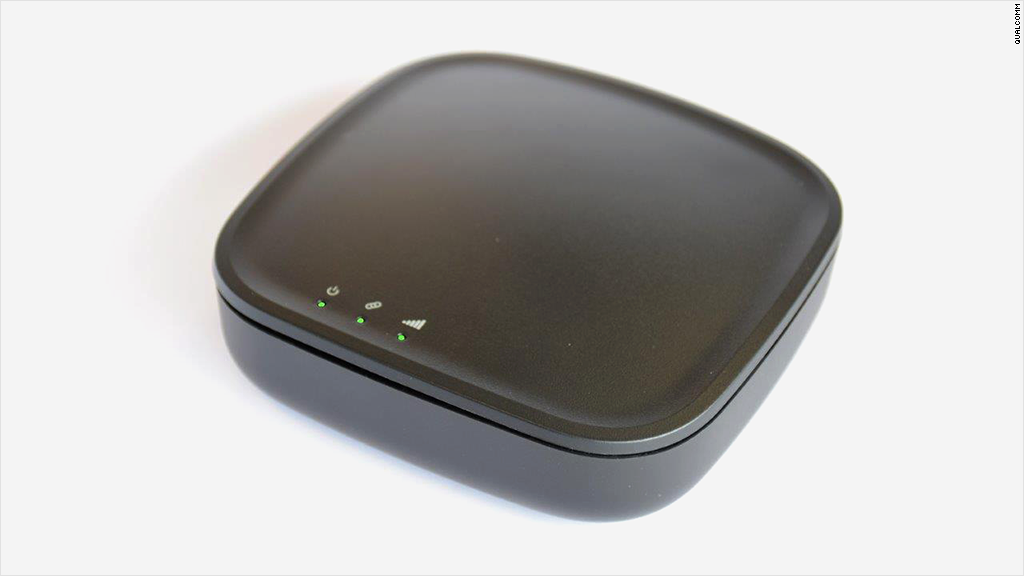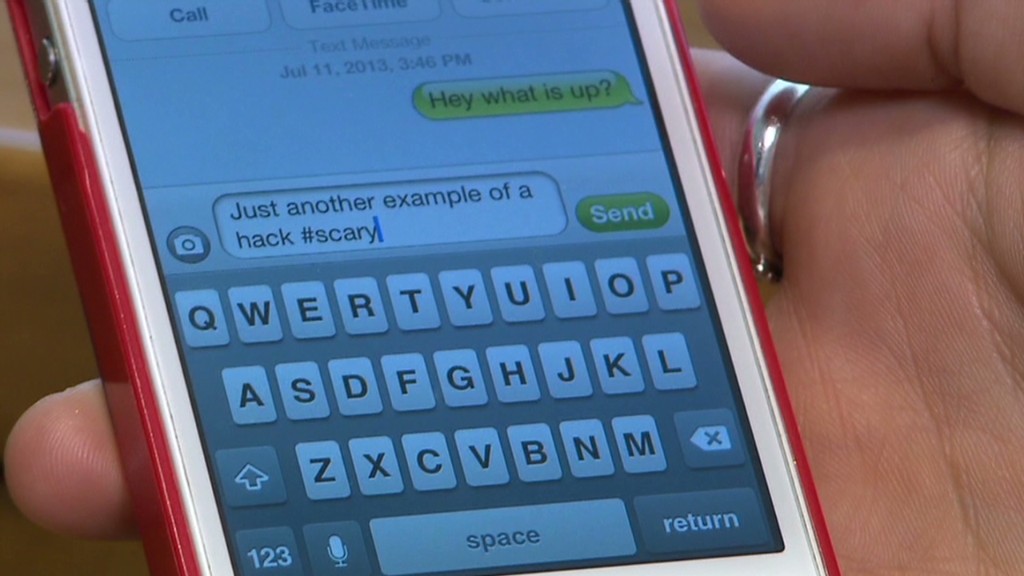
Tired of crappy cell-phone service at home? Trying putting a cell tower in your living room.
That's the solution a number of wireless companies have begun offering for homes and businesses, using "small cell" technology to fill holes in their coverage and ease network congestion.
Qualcomm (QCOM) announced a new line of small cell chips Wednesday that work with the high-speed 4G-LTE networks that wireless carriers have been building out in the past few years. Companies like Cisco (CSCO) and Texas Instruments (TXN) produce similar technology. And all the major carriers, including AT&T (T), Verizon (VZ), Sprint (S) and T-Mobile (TMUS) sell small cells, branding them as "signal enhancers" or "network extenders."
In contrast to the massive metal towers that can beam out cellular service for miles, small cells are only about the size of a wireless router, and their signals don't extend much beyond the boundaries of your home. Qualcomm sees the devices as a solution to the wireless industry's so-called spectrum crunch.
Wireless spectrum -- the invisible infrastructure over which all wireless transmissions travel -- is a finite resource, and it is getting gobbled up by people streaming Netflix (NFLX) and YouTube videos on their tablets and smartphones.
Related: T-Mobile is at a crossroards, and so is the U.S. wireless industry
Cisco this week predicted that in 2018 there will be nearly three networked devices per person on Earth and mobile devices will generate more than 60% of Internet traffic.
As more of our communication and media consumption shifts to mobile networks, carriers will struggle to maintain service quality without finding ways to use their existing spectrum more efficiently.

"In the next nine to ten years, it's very easy for us to see that data consumption will go up a thousand times," said Dan Rabinovitsj, senior vice president in Qualcomm's Atheros unit. "You start to look at that and you realize there's not enough spectrum in the universe for that."
Related: Itsy-bitsy teeny cell towers are coming
Small cells help address that problem by routing traffic to your mobile carrier's network via your home Internet connection, leaving more space on the airwaves for other users. Aside from those designed for home usage, there are also slightly larger cells that can be installed in places like malls and city blocks to provide more coverage space.
"It relieves congestion and it promotes usage on the cellular network," said Charles Golvin, an independent telecom analyst.
Golvin said it would likely be a few years before LTE small cells are cost-effective enough to be deployed in large numbers. In the meantime, there are still kinks to be ironed out -- last year, security researchers exposed a vulnerability in 3G small cells used by Verizon that hackers could exploit to intercept texts, phone calls and Web browsing.
Going forward, however, Rabinovitsj said small cells will offer enhanced security versus Wi-Fi while lowering data-delivery costs for carriers.
"I think consumers over time are going to benefit from all of those business models getting revamped," he said.

